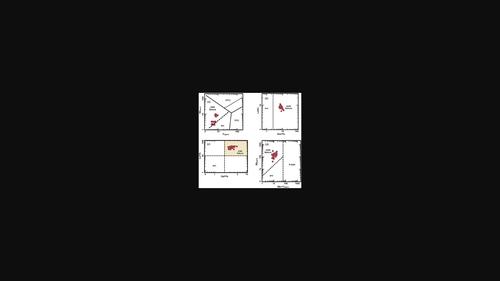Petrology and geochemistry of adakitic intrusions and dykes at Sarcheshmeh porphyry Cu‐Mo ± Au deposit, Iran: Insights into their source
IF 0.8
4区 地球科学
Q3 GEOLOGY
引用次数: 0
Abstract
The Sarcheshmeh porphyry copper deposit (PCD) is located in the southeast part of the arc‐related Urumieh‐Dokhtar volcano‐plutonic belt. This PCD was formed by intrusion of a Middle Miocene granodiorite to tonalite stock into the volcano‐sedimentary rocks that are mainly andesite exhibiting Early Tertiary thrusting and faulting. On the basis of geochemistry of intrusive rocks, they are calc‐alkalic and alkali‐calcic suites that are consistent with oxidized I‐type magmas. The Fe2O3/FeO ratio in the Sarcheshmeh PCD is 1 to 3, consistent with a high oxygen fugacity. The igneous rocks of Sarcheshmeh PCD belong to a mature arc, but related to a post‐collision arc setting. Considerable evidence supports adakitic affinities of the Sarcheshmeh rocks, including geochemical values of Sr > 300 ppm (ave., 594 ppm), high ratios of Sr/Y > 20 (ave., 75), La/Yb > 20 (ave., 30), and enrichment of LREE and LILE relative to HREE and HFSE. The adakites of Sarcheshmeh belong to high‐silica adakites (HSA) that can be formed by melting of subducting seawater‐altered oceanic plate, which interact with the mantle wedge then followed by slab break‐off with local transtension in the middle part of the Dehaj‐Sarduieh belt. In rocks of the region, the ratios of Th/Ce > 0.12 and Nb/Zr > 0.05 suggest that the subducting crust has a role in forming different groups of these rocks. Geotectonic discrimination diagrams are used to distinguish between normal arc and slab failure magmatic systems, including Nb versus Y, La/Sm versus Sm/Yb, La/Yb versus Gd/Yb, and Rb versus Nb + Y diagrams. The plutonic rocks of the Sarcheshmeh PCD have characteristics consistent with adakites derived via slab failure, which are obviously metallogenically favorable magmatic systems. Adakitic melts generated rapidly during sinking of a broken slab (into higher temperature mantle), buoyantly migrate through the subcontinental lithospheric mantle (SCLM), which is related to structural evolution of that SCLM with local extension or transpression.

伊朗Sarcheshmeh斑岩型Cu - Mo±Au矿床中绿质侵入岩和脉岩的岩石学和地球化学特征及其来源
Sarcheshmeh斑岩铜矿床(PCD)位于与弧相关的乌鲁木齐- Dokhtar火山-成矿带的东南部。该PCD是由中中新世花岗闪长岩和闪长岩侵入以安山岩为主的火山沉积岩形成的,这些火山沉积岩具有早第三纪的逆冲和断裂作用。侵入岩的地球化学特征表明,它们是与ⅰ型氧化岩浆相一致的钙碱性套和碱钙套。Sarcheshmeh PCD中Fe2O3/FeO的比值为1 ~ 3,具有较高的氧逸度。Sarcheshmeh PCD的火成岩属于成熟弧,但与碰撞后弧环境有关。相当多的证据表明,Sarcheshmeh岩石的地球化学值Sr > 300 ppm (ave., 594 ppm), Sr/Y > 20 (ave., 75), La/Yb > 20 (ave., 30), LREE和LILE相对于HREE和HFSE富集。Sarcheshmeh的埃达克岩属于高硅埃达克岩(HSA),可由俯冲海水蚀变的大洋板块熔融形成,与地幔楔相互作用,然后在Dehaj - Sarduieh带中部发生板块断裂和局部张拉。区内岩石中Th/Ce比值> 0.12,Nb/Zr比值> 0.05,表明俯冲地壳对不同类型岩石的形成起了作用。大地构造辨别图用于区分正弧和板破坏岩浆系统,包括Nb与Y、La/Sm与Sm/Yb、La/Yb与Gd/Yb、Rb与Nb + Y图。萨切什梅PCD的深成岩具有与板裂成因埃达克岩相一致的特征,是明显的成矿有利岩浆系统。破碎板块下沉(向高温地幔)过程中迅速产生的阿达克质熔体在次大陆岩石圈地幔(SCLM)中浮力迁移,这与该次大陆岩石圈地幔的局部伸展或转张的结构演化有关。
本文章由计算机程序翻译,如有差异,请以英文原文为准。
求助全文
约1分钟内获得全文
求助全文
来源期刊

Resource Geology
地学-地质学
CiteScore
2.30
自引率
14.30%
发文量
18
审稿时长
12 months
期刊介绍:
Resource Geology is an international journal focusing on economic geology, geochemistry and environmental geology. Its purpose is to contribute to the promotion of earth sciences related to metallic and non-metallic mineral deposits mainly in Asia, Oceania and the Circum-Pacific region, although other parts of the world are also considered.
Launched in 1998 by the Society for Resource Geology, the journal is published quarterly in English, making it more accessible to the international geological community. The journal publishes high quality papers of interest to those engaged in research and exploration of mineral deposits.
 求助内容:
求助内容: 应助结果提醒方式:
应助结果提醒方式:


